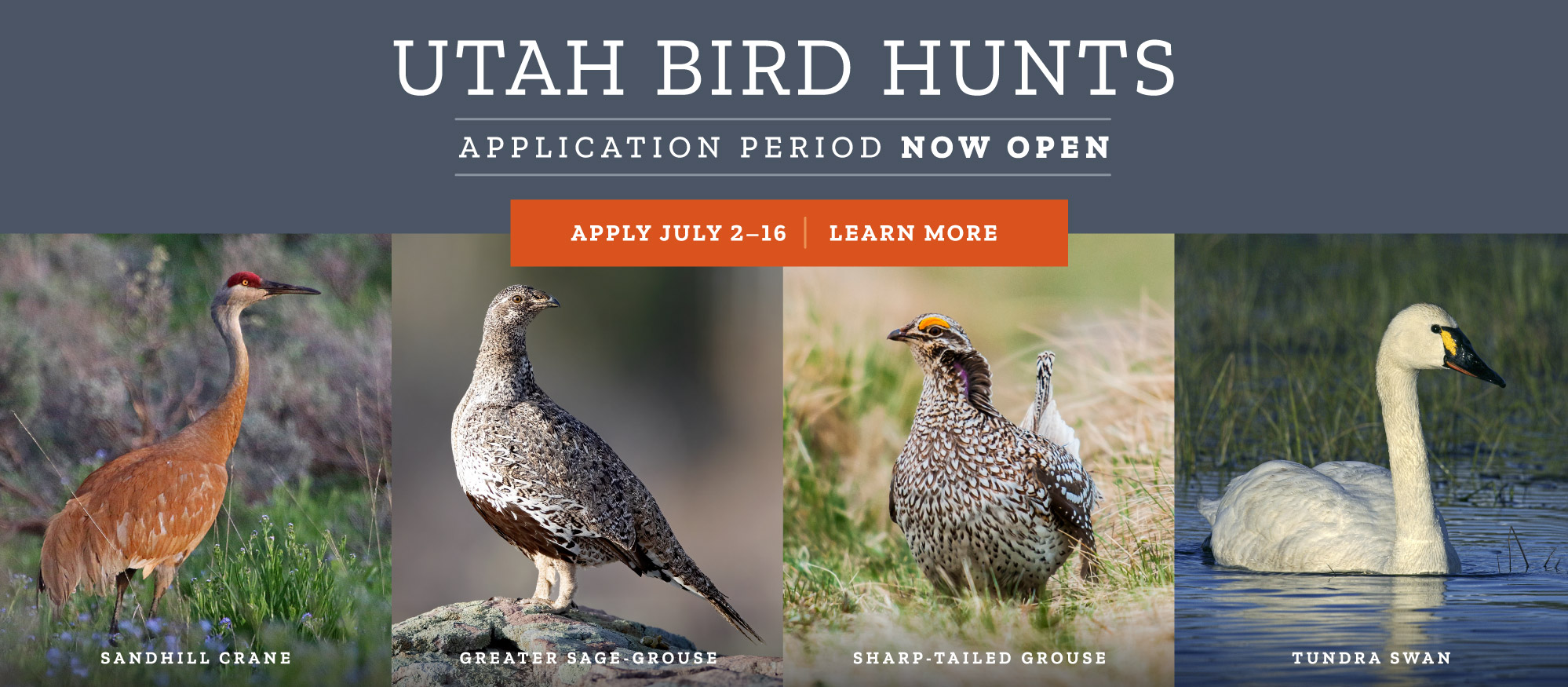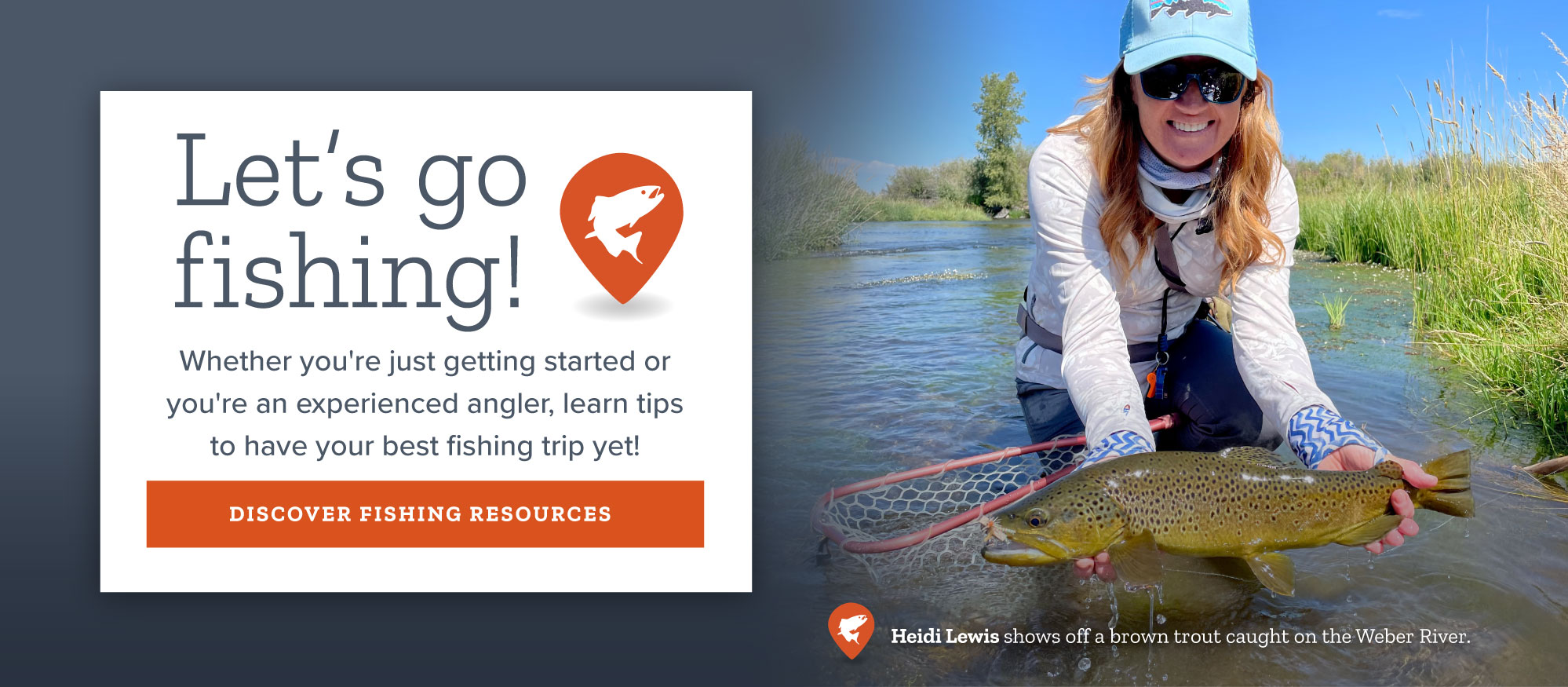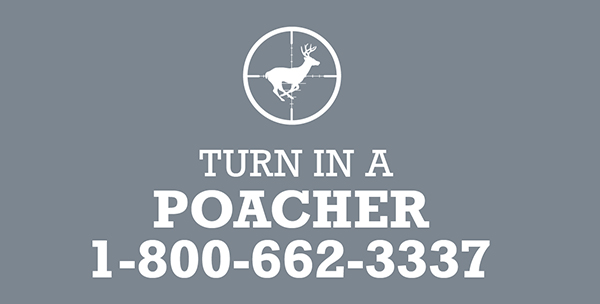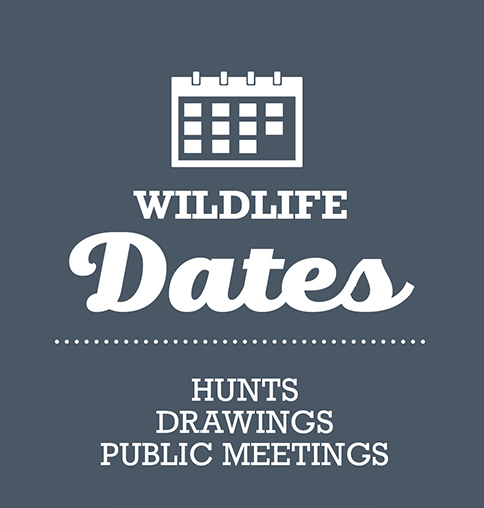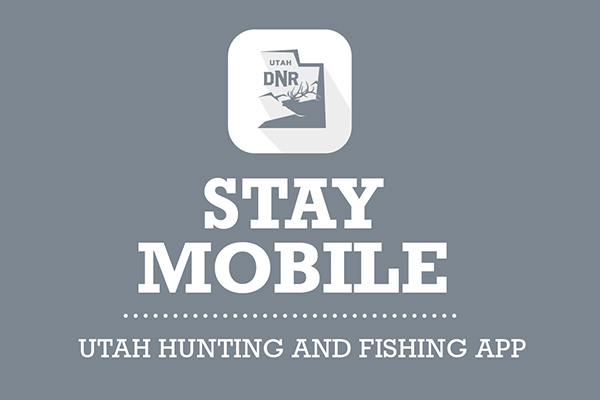Administrative rule R657-17
Lifetime hunting and fishing license
Scroll to bottom of page to view a menu of all administrative rules
KEY: wildlife, game laws, hunting and fishing licenses
Date of Last Change: October 1, 2023
Notice of Continuation: September 8, 2020
Authorizing, and Implemented or Interpreted Law: 23A-4-402; 23A-4-1001
R657-17-1. Purpose and Authority.
(1) Under authority of Section 23A-4-402, this rule provides the requirements and procedures applicable to lifetime hunting and fishing licenses.
(2) In addition to the provisions of this rule, a lifetime licensee is subject to:
(a) the provisions set forth in Title 23A, Wildlife Resources Code of Utah; and
(b) the rules and proclamations of the Wildlife Board, including all requirements for hunting permits and fishing licenses.
(3) Unless specifically stated otherwise, lifetime licensees shall be subject to any amendment to this rule or any amendment to Section 23A-4-402.
R657-17-2. Definitions.
(1) Terms used in this rule are defined in Section 23A-1-101 and Rule R657-5.
(2) In addition:
(a) "Lifetime Questionnaire" means a list of questions, accessible by a lifetime licensee at the division's website, used to identify the lifetime licensee's preferred choice of a general season deer permit unit and hunt type.
(b) "Recent Lifetime Licensee Record" means the most recent general deer permit issued within the immediately preceding 3 years.
(c) "Application Deadline" means the close of the annual Big Game application period, as established in the guidebook of the Wildlife Board for taking big game.
R657-17-3. Lifetime License Entitlement.
(1)(a) A permanent lifetime license card shall be issued to lifetime licensees in lieu of an annual hunting, and fishing license.
(b) The issuance of a permanent lifetime license card does not authorize a lifetime licensee to all hunting privileges. The lifetime licensee is subject to the requirements in Subsection R657-17-1(2).
(2)(a) Each year, a lifetime licensee who is eligible to hunt big game may receive without charge, a permit for the unit of their choice for one of the following general deer hunts:
(i) archery buck deer;
(ii) any weapon buck deer; or
(iii) muzzleloader buck deer.
(b) Effective January 1, 2012 all lifetime license holders must initially select a general season hunting unit during the Big Game application period as established in the guidebook of the Wildlife Board for taking big game.
(3) Sales of lifetime hunting and fishing licenses may not be refunded, except as provided in Section 23A-4-207.
(4) Lifetime hunting and fishing licenses are not transferable.
(5) Lifetime hunting and fishing licenses are no longer for sale as of March 1, 1994.
(6)(a) Lifetime license holders may participate in the Dedicated Hunter Program.
(b) Upon entering the Dedicated Hunter Program, the lifetime license holder agrees to forego any rights to receive a buck deer permit for the general archery, general any weapon or general muzzleloader deer hunts as provided in Section 23A-4-402 during enrollment in the Dedicated Hunter Program.
R657-17-4. General Deer Permits.
(1) The Division will issue a general buck deer permit to each lifetime licensee prior to the big game general hunting season, provided:
(a) a current Lifetime Questionnaire has been completed prior to the application deadline, identifying the lifetime licensee's general season unit and hunt type choice, or according to the recent lifetime licensee record; and
(b) provided the lifetime licensee does not apply for a general deer permit in the big game drawing.
(2) A lifetime licensee may change their previous year's unit choice, prior to the application deadline by completing the online Lifetime Questionnaire through the division's website.
(3) Lifetime licensees must notify the division of any change in mailing address, email address, residency, address, telephone number, physical description, or driver's license number.
(4) If a general buck deer permit is not issued to a lifetime licensee during the preceding 3 years, the lifetime licensee must complete and submit the Lifetime Questionnaire on the division's website prior to the application deadline.
(i) Effective January 1, 2012 all lifetime license holders must initially select a general season hunting unit during the Big Game application period as established in the guidebook of the Wildlife Board for taking big game.
(5) If a lifetime licensee fails to submit a current year Lifetime Questionnaire and does not have a recent lifetime licensee record by the application deadline, the lifetime licensee may only obtain a remaining general deer permit when remaining drawing permits are made available to the public over-the-counter. If no general deer permits are remaining after the drawing, the lifetime licensee shall not be issued a permit.
(6)(a) Lifetime licensees may apply for any general deer permit in the big game drawing.
(b) Drawing applications are subject to the established application fee.
(c) A lifetime licensee that applies for a general deer permit in the drawing waives the opportunity to be issued a general deer permit according to the recent lifetime licensee record or the current Lifetime Questionnaire excluding applications for dedicated hunter deer permits. Lifetime licensees may apply for dedicated hunter deer permits pursuant to R657-17-5(5).
(7) Lifetime licensees may apply for general deer preference points through the big game general buck deer drawing as provided in Rule R657-62 and the guidebooks of the Wildlife Board for taking big game, provided the lifetime licensee waives their opportunity to be issued a general buck deer permit that year according to the recent lifetime licensee record or the current Lifetime Questionnaire.
R657-17-5. Applying for Big Game Permits.
(1) A lifetime licensee may apply for a limited entry permit offered through the big game drawing using a bucks, bulls and once-in-a-lifetime application.
(2) Limited entry permit species and application procedures are provided in Rule R657-62 and the guidebook of the Wildlife Board for taking big game.
(3)(a) If the lifetime licensee applies for and is successful in obtaining a premium limited entry, limited entry, or cooperative wildlife management unit buck deer permit in the big game drawing, a general deer permit will not be issued.
(b) If the lifetime licensee does not draw a premium limited entry, limited entry, or cooperative wildlife management unit buck deer permit in the big game drawing, the general deer permit requested on the Lifetime Questionnaire or the recent lifetime licensee record shall be issued.
(4) Applying for or obtaining an antlerless deer, antlerless elk, or doe pronghorn permit does not affect eligibility for obtaining a general buck deer permit.
(5)(a) A lifetime licensee may apply for a dedicated hunter deer permit through the big game drawing.
(b) If the lifetime licensee applies for and is successful in obtaining a dedicated hunter deer permit in the big game drawing, a general deer permit will not be issued.
(c) If the lifetime licensee does not draw a dedicated hunter deer permit in the big game drawing, the general deer permit requested on the Lifetime Questionnaire or the recent lifetime licensee record shall be issued.
(6) All rules established by the Wildlife Board regarding the availability of big game permits in relation to obtaining general deer permits shall apply to lifetime licensees.
R657-17-6. Hunter Education Requirements — Minimum Age for Hunting.
(1) The division shall issue a lifetime licensee only those licenses, permits, and tags for which that person qualifies according to the hunter education requirements, age restrictions specified in this Section and Title 23, Wildlife Resources Code of Utah, and suspension orders of a division hearing officer.
(2)(a) Lifetime licensees born after December 31, 1965, must be certified under Section 23A-4-1001 to engage in hunting.
(b) Proof of hunter education must be provided to the division by the lifetime licensee.
(3) Age requirements to engage in hunting are as follows:
(a) A lifetime licensee must have completed a valid hunter education course to hunt.
(b) A lifetime licensee must be 12 years of age or older to hunt big game.
R657-17-7. Change of Residency.
(1) A lifetime hunting and fishing license shall remain valid if the licensee changes residency to another state or country.
(2)(a) A lifetime licensee who no longer qualifies as a resident under Section 23A-1-101 shall notify the division within 60 days of leaving the state.
(b) The division shall issue the lifetime licensee a new lifetime hunting and fishing license with the change of address after the lifetime licensee surrenders the lifetime hunting and fishing license with the previous address.
(3) A lifetime licensee who does not qualify as a resident shall purchase the required nonresident permits or tags required for hunting, except as provided in Subsection R657-17-3(2).
R657-17-8. Lost or Stolen Lifetime Hunting and Fishing License.
(1) If a lifetime hunting and fishing license is lost or stolen, a duplicate may be obtained from any division office by:
(a) providing verification of identity; and
(b) paying a lifetime hunting and fishing license duplication fee.
Administrative rule R657-19
Taking nongame mammals
Scroll to bottom of page to view a menu of all administrative rules
KEY: wildlife, game laws
Date of Last Change: October 1, 2023
Notice of Continuation: July 2023
Authorizing, and Implemented or Interpreted Law: 23A-1-102; 23A-2-304; 23A-2-305
R657-19-1. Purpose and Authority.
(1) Under authority of Sections 23A-1-102, 23A-2-304 and 23A-2-305, this rule provides the standards and requirements for taking and possessing nongame mammals.
(2) A person capturing any live nongame mammal for a personal, scientific, educational, or commercial use must comply with Rule R657-3 Collection, Importation, Transportation and Subsequent Possession of Zoological Animals.
R657-19-2. Definitions.
(1) Terms used in this rule are defined in Section 23A-1-101.
(2) In addition:
(a) "Immediate family" means the landowner's or lessee's spouse, children, son-in-law, daughter-in-law, father, mother, father-in-law, mother-in-law, brother, sister, brother-in-law, sister-in-law, stepchildren, and grandchildren.
(b) "Nongame mammal" means:
(i) any species of bats;
(ii) any species of mice, rats, or voles of the families Heteromyidae, Cricetidae, or Zapodidae;
(iii) opossum of the family Didelphidae;
(iv) pikas of the family Ochotonidae;
(v) porcupine of the family Erethizontidae;
(vi) shrews of the family Soricidae; and
(vii) squirrels, prairie dogs, and marmots of the family Sciuridae.
R657-19-3. General Provisions.
(1) A person may not purchase or sell any nongame mammal or its parts.
(2)(a) The live capture of any nongame mammals is prohibited under this rule.
(b) The live capture of nongame mammals species may be allowed as authorized under Rule R657-3.
(3) Section 23A-5-314 does not apply to the taking of nongame mammal species covered under this rule.
R657-19-4. Nongame Mammal Species - Certificate of Registration Required.
(1) A certificate of registration is required to take any of the following species of nongame mammals:
(a) bats of any species; and
(b) pika - Ochotona princeps.
(2) A certificate of registration is required to take any shrew - Soricidae, all species.
(3) A certificate of registration is required to take a Utah prairie dog, Cynomys parvidens, as provided in Sections R657-19-6, R657-19-7, R657-19-8 and R657-19-9.
(4) A certificate of registration is required to take any of the following species of nongame mammals in Washington County:
(a) cactus mouse - Peromyscus eremicus;
(b) kangaroo rats - Dipodomys, all species;
(c) Southern grasshopper mouse - Onychomys torridus; and
(d) Virgin River montane vole - Microtus montanus rivularis, which occurs along stream-side riparian corridors of the Virgin River.
(5) A certificate of registration is required to take any of the following species of nongame mammals in San Juan and Grand counties:
(a) Abert squirrel - Sciurus aberti;
(b) Northern rock mouse - Peromyscus nasutus; and
(c) spotted ground squirrel - Spermophilus spilosoma.
(6) The division may deny a certificate of registration to any applicant, if:
(a) the applicant has violated any provision of:
(i) Title 23A of the Utah Code;
(ii) Title R657 of the Utah Administrative Code;
(iii) a certificate of registration;
(iv) an order of the Wildlife Board; or
(v) any other law that bears a reasonable relationship to the applicant's ability to safely and responsibly perform the activities that would be authorized by the certificate of registration;
(b) the applicant misrepresents or fails to disclose material information required in connection with the application;
(c) taking the nongame mammal as proposed in the application violates any federal, state or local law;
(d) the application is incomplete or fails to meet the issuance criteria set forth in this rule; or
(e) the division determines the activities sought in the application may significantly damage or are not in the interest of wildlife, wildlife habitat, serving the public, or public safety.
R657-19-5. Nongame Mammal Species - Certificate of Registration Not Required.
(1) All nongame mammal species not listed in Section R657-19-4 as requiring a certificate of registration, may be taken:
(a) without a certificate of registration;
(b) year-round, 24-hours-a-day; and
(c) without bag or possession limits.
(2) A certificate of registration is not required to take any of the following species of nongame mammals, however, the taking is subject to the provisions provided under Section R657-19-10:
(a) White-tailed prairie dog, Cynomys leucurus; and
(b) Gunnison prairie dog, Cynomys gunnisoni.
R657-19-6. Utah Prairie Dog Provisions.
(1)(a) A person may not take a Utah Prairie dog, Cynomys parvidens, without first obtaining a certificate of registration from the division.
(b) A certificate of registration for taking Utah prairie dogs may be issued as provided in Subsection (i) or Subsection (ii), or Subsection (iii), if the taking will not further endanger the existence of the species:
(i) in cases where Utah Prairie dogs are causing damage to agricultural lands as provided in the rules of the U.S. Fish and Wildlife Service; or
(ii) as provided in a valid Incidental Take permit issued by the U.S. Fish and Wildlife Service under an approved Habitat Conservation Plan; or
(iii) as provided under a valid Incidental Take permit issued by the U.S. Fish and Wildlife Service allowing take of Utah prairie dogs on specified private lands as part of an approved conservation agreement enacted between the U.S. Fish and Wildlife Service and the owner of those private lands.
(c) A person may apply for a certificate of registration at the division's southern regional office, 1470 North Airport Road, Suite 1, Cedar City, Utah 84721.
(d) A landowner, lessee, or their immediate family member, or an employee on a regular payroll and not hired specifically to take Utah prairie dogs, may apply for a certificate of registration.
(e)(i) A person, other than those listed in Subsection (d), may apply for a certificate of registration to take Utah prairie dogs as a designee of the landowner or lessee provided the application includes:
(A) an explanation of the need for the certificate of registration to be issued;
(B) justification for utilization of the designee; and
(C) the landowner or lessee's signature.
(ii) A maximum of two designee certificates of registration may be issued per landowner or lessee.
(iii) Each designee application shall be considered individually based upon the explanation and justification provided.
(f) An application for a certificate of registration must include:
(i) full name;
(ii) complete mailing address;
(iii) phone number;
(iv) date of birth;
(v) weight and height;
(vi) gender;
(vii) color of hair and eyes;
(viii) social security number;
(ix) driver's license number, if issued;
(x) proof of hunter education certification if the applicant was born after December 31, 1965; and
(xi) the township, range, section and 1/4 section of the agricultural lands where the prairie dogs will be taken.
(g) An applicant must be at least 14 years of age at the time of application and must abide by the provisions for children being accompanied by adults while hunting with a weapon pursuant to Section 23A-4-708.
(h) After review of the application, a certificate of registration may be issued.
(i) A maximum of four certificates of registration may be issued to any landowner or lessee, including those issued to the landowner or lessee's designees.
(j) A certificate of registration shall be issued on an individual basis and shall be valid only for the person to whom the certificate of registration is issued.
(k) A certificate of registration is not transferrable and must be signed by the holder prior to use.
(l) If the application and permitting process is accomplished by U.S. Mail, the certificate of registration shall only become valid after a copy of the signed certificate of registration is received by the division's southern regional office.
(2)(a) A person may take Utah prairie dogs with a firearm during daylight hours or by trapping as specified on the certificate of registration.
(b) A person may not use any chemical toxicant to take Utah prairie dogs.
(c) In addition to the requirements of this rule, any person taking Utah prairie dogs must comply with state laws, and local ordinances and laws.
(d) A person at least 14 years of age and under 16 years of age who takes Utah Prairie dogs must be accompanied by an adult with a valid certificate of registration to take Utah Prairie dogs on the same property.
R657-19-7. Areas Open to Taking Utah Prairie Dogs — Dates Open — Limits on Number of Utah Prairie Dogs Taken.
(1) A person who obtains a valid certificate of registration may take Utah prairie dogs only on private lands within the following counties:
(a) Beaver;
(b) Garfield;
(c) Iron;
(d) Kane;
(e) Millard;
(f) Piute;
(g) Sanpete;
(h) Sevier;
(i) Washington; and
(j) Wayne.
(2) Taking of a Utah prairie dog on any land or by any method, other than as provided in the valid certificate of registration, including any public land, is a violation of state and federal law.
(3) Any person, who is specifically named on a valid certificate of registration, may remove Utah prairie dogs, as provided in the certificate of registration.
(4) The taking of any Utah prairie dog outside the areas provided in this section is prohibited, except by division employees while acting in the performance of their assigned duties.
(5) The taking of Utah prairie dogs is limited to the dates designated on the certificate of registration. All dates are confined to June 15 through December 31, except as provided in Subsection R657-19-6(1)(b)(iii).
(6)(a) A person may take only the total number of Utah prairie dogs designated in the certificate of registration, except as provided in Subsection R657-19-6(1)(b)(iii).
(b) The total annual range-wide take of Utah prairie dogs and the total annual take of Utah Prairie dogs on agricultural lands is governed by federal law.
(c) If the division determines that taking Utah prairie dogs has an adverse effect on conservation of the species, taking shall be further restricted or prohibited.
(7) If Utah prairie dogs are delisted by the U.S. Fish and Wildlife Service from the endangered or threatened species list or authority over Utah prairie dogs is delegated to the state in certain areas see Rule R657-70 for the division's regulations.
R657-19-8. Monthly Reports of Take of Utah Prairie Dogs.
(1) The following information must be reported to the division's southern regional office, 1470 North Airport Road, Suite 1, Cedar City, Utah 84721, every 30 days:
(a) the name and signature of the certificate of registration holder;
(b) the person's certificate of registration number;
(c) the number of Utah prairie dogs taken; and
(d) the location, method of take, and method of disposal of each Utah prairie dog taken during the 30-day period.
(2) Failure to report the information required in Subsection (1), within 30 days, may result in the denial of future applications for a certificate of registration to take Utah prairie dogs.
R657-19-9. Unlawful Possession of Utah Prairie Dogs.
A person may not possess a Utah prairie dog or its parts, without first obtaining a valid certificate of registration and a federal permit.
R657-19-10. White-tailed and Gunnison Prairie Dogs.
(1)(a) A license or certificate of registration is not required to take either white-tailed or Gunnison prairie dogs.
(b) There are no bag limits for white-tailed or Gunnison prairie dogs for which there is an open season.
(2)(a) White-tailed prairie dogs, Cynomys leucurus, may be taken in the following counties from January 1 through March 31, and June 16 through December 31:
(i) Carbon County;
(ii) Daggett County;
(iii) Duchesne County;
(iv) Emery County;
(v) Morgan;
(vi) Rich;
(vii) Summit County;
(viii) Uintah County, except in the closed area as provided in Subsection (2)(b)(i);
(ix) Weber; and
(x) all areas west and north of the Colorado River in Grand and San Juan counties.
(b) White-tailed prairie dogs, Cynomys leucurus, may not be taken in the following closed area in order to protect the reintroduced population of black-footed ferrets, Mustela nigripes:
(i) Boundary begins at the Utah/Colorado state line and Uintah County Road 403, also known as Stanton Road, northeast of Bonanza; southwest along this road to SR 45 at Bonanza; north along this highway to Uintah County Road 328, also known as Old Bonanza Highway; north along this road to Raven Ridge, just south of US 40; southeast along Raven Ridge to the Utah/Colorado state line; south along this state line to point of beginning.
(3) The taking of White-tailed prairie dogs, Cynomys leucurus, is prohibited from April 1 through June 15, except as provided in Subsection (5).
(4)(a) The taking of Gunnison prairie dogs, Cynomys gunnisoni, is prohibited in all areas south and east of the Colorado River, and north of the Navajo Nation in Grand and San Juan counties from April 1 through June 15.
(b) Gunnison prairie dogs may be taken in the area provided in Subsection (4)(a) from June 16 through March 31.
(5) Gunnison prairie dogs and White-tailed prairie dogs causing agricultural damage or creating a nuisance on private land may be taken at any time, including during the closed season from April 1 through June 15.
R657-19-11. Violation.
(1) Any violation of this rule is a Class C misdemeanor as provided in Section 23A-5-301 (1)(b).
(2) In addition to this rule any animal designated as a threatened or endangered species is governed by the Endangered Species Act and the unlawful taking of these species may also be a violation of federal law and rules promulgated thereunder.
(3) Pursuant to Section 23A-4-1106, the division may suspend a certificate of registration issued under this rule.
